
Day 4, Saturday 7 March
Adjusting…….. The night passes with a little more restlessness than the previous two nights. Breakfast is arranged for 9am but I haven’t confirmed a time with the driver. By now, after experiencing some inconsistency with the power sockets used in Sri Lanka, I’ve decided to hand-write my notes. Although it means more work later on, this is a tried and tested method. After all, a pen is low tech and usually more reliable. It also seems to take less valuable time when travelling. With my notes written up to cover the few attractions we visited yesterday, the netbook I brought will now be an unnecessary burden and I’m not really sure it still works which would be crazy given the problems I’ve had already with other equipment. Still I’m going to play safe but accept that my smart phone will be the only thing I have for internet and photo/video capture. I’m asking a lot from it with the tour barely started.
At Villa Lorenta, I’m not so happy with the lack of worktop space but I guess that’s no problem if I’m just handwriting my blog. I do miss a kettle though. For breakfast the owner brings out toast and jam with coffee, juice and a plain omelette but quite honestly, I was hoping for more. Well, without further ado, I must get on with it and start my first full day on tour.
Anuradhapura Old City…….. Anuradhapura is a major city in Sri Lanka. It is the capital city of North Central Province, Sri Lanka and the capital of Anuradhapura District. Anuradhapura is one of the ancient capitals of Sri Lanka, famous for its well-preserved ruins of an ancient Sinhala civilization. It was the third capital of the kingdom of Rajarata, following the kingdoms of Tambapanni and Upatissa Nuwara.
The city, now a World Heritage site, was the centre of Theravada Buddhism for many centuries. The city lies 205 km (127 mi) north of the current capital of Colombo in the North Central Province, on the banks of the historic Malvathu River. It is one of the oldest continuously inhabited cities in the world and one of the eight World Heritage Sites in Sri Lanka.
With this information to hand, it’s obvious I need to check it out but there is a problem. There is a $25 entrance fee to the ruins and Katoon will not get a concession here, despite her religious alignment. $50 dollars is a lot considering this is just one important historic site we are likely to visit on this tour. Its early days but I’m already beginning to regret that I booked this tour rather than going it alone. However, I seem to be stuck with it but there may be another option. As we enter the old city there are some attractions that are free and other accessed for a small fee. The other interesting fact is that the site is inhabited and criss-crossed with many roads. How do they police it I wonder?
Maha Bodi Tree (Jaya Sri Maha Bodhi)…….. A ten minute's drive away is the Maha Bodi Tree where it’s free to enter the compound; the only significant site that is. Today is a Saturday and there is a huge crowd already at this sacred site. The Maha Bodi Tree is an important symbol if Theravada Buddhism and examples I know exist in Thailand too. As I wander around the site, I’m keen to record what I see.
Jaya Sri Maha Bodhi is a sacred fig tree in the Mahamewna Gardens, Anuradhapura, Sri Lanka. It is said to be the southern branch from the historical Sri Maha Bodhi at Buddha Gaya in India under which Lord Buddha attained Enlightenment. It was planted in 288 BC and is the oldest living human-planted tree in the world with a known planting date. Today it is one of the most sacred relics of the Buddhists in Sri Lanka and respected by Buddhists all over the world.
The other fig trees that surround the sacred tree protect it from storms and are home to animals such as monkeys and bats.
In April 2014, the government banned all construction within 500 meters of the tree. Only construction that obviously will not harm the tree will be allowed.
Mayura Piriwena……..the remains of a building known as Mayura Piriwena are situated to the southwest of the Maha Bodi Tree and was built by King Buddhadasa (340-368 A.D. using donations from villagers for its maintenance. The original was replaced by King Dhatusena (455-477 A.D.) and King Mahanaga (573-575 A.D.). The present building consists of a few stone pillars with sculptured capitals. The architectural style is consistent with the Anuradhapura Era.
Tensions…….. By now it's clear that this is a massive site to cover but what happens next is surreal and the result of my procrastination over the $25 dollar entrance fee which only foreigners pay. While Katoon shows no interest in an all-day exploration of the old city, I won’t leave her or wish to wander around in the baking heat. When we arrive at a ticket office, I ask for a concession to take just a few of the more important sites in Anuradhapura Old City but they insist on the full fee. All I require is to take a few distance shots of the main stupas from the roadway. From what I have seen so far, the city was massive and it would take some time to visit even the most important sites. There is just the one ticket office on site. While our driver attempts to negotiate, we’re approached by an independent guide who offers a tour at a knock down price but there’s no indication that we won’t still have to pay the $50 fee. Our driver is also getting irritated that I’m even talking to the guide and the situation degenerates into a mass of confusion while I try to understand what’s going on. It’s a fact that most Sri Lankans speak English. That should be an advantage but I’m afraid the version of English they speak is foreign to me since most of it comes out of their backsides. One sentence that is clear to me is, ‘if in doubt, do nout’ and with that I get back in the car. I totally understand these precious monuments have to be protected but why do foreigners have to finance it when the locals pay nothing? Our driver seems to sympathise and carries on into the park. Even he knows that a lot of this money never reaches the source for which it was intended.
Progress further into the park has not gone unnoticed and it seems we have been snitched on. A park policeman has been sent on a motorbike to follow us. When we even stop at one of the stupas to take a photo we’re pulled over. In case you’re wondering, I’m not making this up! A furious argument develops between our driver and the park policeman. In essence we’re being chased out of the park and not allowed to stop at any site. Our driver has done his best for the moment. Finally, the pursuer gives up but for the moment there are other options.
Mihinthale…….. Arriving at Mihinthale east of Anuradhapura, there is another substantial area of ancient ruins. The whole area must have been of massive importance, bigger than Thailand’s Dvaravati cities of similar age. Moreover, many of the ruins are quite intact, even some over 2,000 years old. How I’m going to record it all in any amount of detail I really don’t know. The starting point is the monastery itself on a hill but the only way to reach it, is up a long staircase. As I start to ascend, I soon realise it’s a stiff test for me under a searing sun. When I find out the extent of the site and the entry fee, I just give it up. It’s another dot ball. I’m beginning to believe that this tour is too ambitious for me and to presume that it can be conducted in the way I’ve conduced many successful tours in Thailand and other countries in the region just isn’t possible here. I’ve a lot of thinking to do over the coming days. If I carry on this way, I’m going to have to rely on online sources to support my visit more extensively than I would normally have to.
Mihintale is a mountain peak near Anuradhapura in Sri Lanka. It is believed by Sri Lankans to be the site of a meeting between the Buddhist monk Mahinda and King Devanampiyatissa which inaugurated the presence of Buddhism in Sri Lanka. It is now a pilgrimage site, and the site of several religious monuments and abandoned structures.
More information on the history and description covering the main features: The Hospital, Kantaka Cetiya, The Refectory, Ambasthala Dagaba, The Cave of Arahat Mahinda, Maha Stupa, Aradhana Gala, Kaludiya Pokuna, Naga Pokuna, Singha Pokuna and Buddha Statue can be found here.
Before we head back to Anuradhapura there is chance to take in some of the monuments around the hill.
Pracina Tissa Pabbata Vihara…….. Near the Maha Bodhi tree is a former king's palace. According to the chronicle Mahavamsa, Pracina Tissa Pabbata Vihara was built during the reign of King Jetthatissa (266-275 AD). A rock inscription from the 4th/5th Century found at the site names this temple as 'Pajina Tisa Pava'. This monastic complex, surrounded by a moat had been built with all monastic attributes to the architectural style of the Pabbata Viharas. The structures are believed to have been completed between the 7th and 9th Centuries.
Katu Seya……..According to legend, the smithy implements and tools used in the construction of the Mihinthale Monastery are enshrined in the stupa at Katu Seya. During an excavation in the 19th Century of the area around the stupa, copper plates with the inscriptions of the Mahayana Sutra verses in Sanskrit and Sinhala written during the 8th and 9th centuries were discovered here. The architectural style of the stupa confirms it is from the Anuradhapura Period.
Back to the Historic Site…….. It’s now time for lunch and return to the Old City. I’ve read about it and my driver knows about it, that there is a back road into the Historic Park. Yes, of course there are the eyes of the ‘Gestapo’ everywhere, certainly at all entrances to the main monuments but we again are able to get close enough to some of the main monuments to capture photos. Obviously, I cannot get close enough to view the features of each monument or record information from sign boards. It’s too late now to back track so I’m just going to have to improvise achieving some good views of Jetavanarama, Abhayagiri Dagaba and Thuparamaya.
Eight Great Places of Veneration…….. The eight great places of veneration in Anuradhapura – Atamasthana are: Jaya Sri Maha Bodhi, Ruwanwelisaya, Thuparamaya, Lovamahapaya, Abhayagiri Dagaba, Jetavanarama, Mirisaveti Stupa, Lankarama. Not all of these places are identified today.
Missgivings…….. Returning to Villa Lorenta in mid-afternoon, we call it a day. I have obviously totally underestimated the extent and historic value if the ancient city. Yet I am helpless. My budget was set to only visit the site rather than to make any attempt at serious study which it obviously needs.
After a rest we head off to look for dinner. After last night, neither of us is feeling bullish enough to go for anything that doesn’t look familiar, Katoon choosing fried noodles while I take a chicken curry with a paratha. With the shortfall in expectations today, I resolve to try a third time to get into the Old City but that will have to be it. Later tomorrow we will be heading for a new destination. Next Page.
Adjusting…….. The night passes with a little more restlessness than the previous two nights. Breakfast is arranged for 9am but I haven’t confirmed a time with the driver. By now, after experiencing some inconsistency with the power sockets used in Sri Lanka, I’ve decided to hand-write my notes. Although it means more work later on, this is a tried and tested method. After all, a pen is low tech and usually more reliable. It also seems to take less valuable time when travelling. With my notes written up to cover the few attractions we visited yesterday, the netbook I brought will now be an unnecessary burden and I’m not really sure it still works which would be crazy given the problems I’ve had already with other equipment. Still I’m going to play safe but accept that my smart phone will be the only thing I have for internet and photo/video capture. I’m asking a lot from it with the tour barely started.
At Villa Lorenta, I’m not so happy with the lack of worktop space but I guess that’s no problem if I’m just handwriting my blog. I do miss a kettle though. For breakfast the owner brings out toast and jam with coffee, juice and a plain omelette but quite honestly, I was hoping for more. Well, without further ado, I must get on with it and start my first full day on tour.
Anuradhapura Old City…….. Anuradhapura is a major city in Sri Lanka. It is the capital city of North Central Province, Sri Lanka and the capital of Anuradhapura District. Anuradhapura is one of the ancient capitals of Sri Lanka, famous for its well-preserved ruins of an ancient Sinhala civilization. It was the third capital of the kingdom of Rajarata, following the kingdoms of Tambapanni and Upatissa Nuwara.
The city, now a World Heritage site, was the centre of Theravada Buddhism for many centuries. The city lies 205 km (127 mi) north of the current capital of Colombo in the North Central Province, on the banks of the historic Malvathu River. It is one of the oldest continuously inhabited cities in the world and one of the eight World Heritage Sites in Sri Lanka.
With this information to hand, it’s obvious I need to check it out but there is a problem. There is a $25 entrance fee to the ruins and Katoon will not get a concession here, despite her religious alignment. $50 dollars is a lot considering this is just one important historic site we are likely to visit on this tour. Its early days but I’m already beginning to regret that I booked this tour rather than going it alone. However, I seem to be stuck with it but there may be another option. As we enter the old city there are some attractions that are free and other accessed for a small fee. The other interesting fact is that the site is inhabited and criss-crossed with many roads. How do they police it I wonder?
Maha Bodi Tree (Jaya Sri Maha Bodhi)…….. A ten minute's drive away is the Maha Bodi Tree where it’s free to enter the compound; the only significant site that is. Today is a Saturday and there is a huge crowd already at this sacred site. The Maha Bodi Tree is an important symbol if Theravada Buddhism and examples I know exist in Thailand too. As I wander around the site, I’m keen to record what I see.
Jaya Sri Maha Bodhi is a sacred fig tree in the Mahamewna Gardens, Anuradhapura, Sri Lanka. It is said to be the southern branch from the historical Sri Maha Bodhi at Buddha Gaya in India under which Lord Buddha attained Enlightenment. It was planted in 288 BC and is the oldest living human-planted tree in the world with a known planting date. Today it is one of the most sacred relics of the Buddhists in Sri Lanka and respected by Buddhists all over the world.
The other fig trees that surround the sacred tree protect it from storms and are home to animals such as monkeys and bats.
In April 2014, the government banned all construction within 500 meters of the tree. Only construction that obviously will not harm the tree will be allowed.
Mayura Piriwena……..the remains of a building known as Mayura Piriwena are situated to the southwest of the Maha Bodi Tree and was built by King Buddhadasa (340-368 A.D. using donations from villagers for its maintenance. The original was replaced by King Dhatusena (455-477 A.D.) and King Mahanaga (573-575 A.D.). The present building consists of a few stone pillars with sculptured capitals. The architectural style is consistent with the Anuradhapura Era.
Tensions…….. By now it's clear that this is a massive site to cover but what happens next is surreal and the result of my procrastination over the $25 dollar entrance fee which only foreigners pay. While Katoon shows no interest in an all-day exploration of the old city, I won’t leave her or wish to wander around in the baking heat. When we arrive at a ticket office, I ask for a concession to take just a few of the more important sites in Anuradhapura Old City but they insist on the full fee. All I require is to take a few distance shots of the main stupas from the roadway. From what I have seen so far, the city was massive and it would take some time to visit even the most important sites. There is just the one ticket office on site. While our driver attempts to negotiate, we’re approached by an independent guide who offers a tour at a knock down price but there’s no indication that we won’t still have to pay the $50 fee. Our driver is also getting irritated that I’m even talking to the guide and the situation degenerates into a mass of confusion while I try to understand what’s going on. It’s a fact that most Sri Lankans speak English. That should be an advantage but I’m afraid the version of English they speak is foreign to me since most of it comes out of their backsides. One sentence that is clear to me is, ‘if in doubt, do nout’ and with that I get back in the car. I totally understand these precious monuments have to be protected but why do foreigners have to finance it when the locals pay nothing? Our driver seems to sympathise and carries on into the park. Even he knows that a lot of this money never reaches the source for which it was intended.
Progress further into the park has not gone unnoticed and it seems we have been snitched on. A park policeman has been sent on a motorbike to follow us. When we even stop at one of the stupas to take a photo we’re pulled over. In case you’re wondering, I’m not making this up! A furious argument develops between our driver and the park policeman. In essence we’re being chased out of the park and not allowed to stop at any site. Our driver has done his best for the moment. Finally, the pursuer gives up but for the moment there are other options.
Mihinthale…….. Arriving at Mihinthale east of Anuradhapura, there is another substantial area of ancient ruins. The whole area must have been of massive importance, bigger than Thailand’s Dvaravati cities of similar age. Moreover, many of the ruins are quite intact, even some over 2,000 years old. How I’m going to record it all in any amount of detail I really don’t know. The starting point is the monastery itself on a hill but the only way to reach it, is up a long staircase. As I start to ascend, I soon realise it’s a stiff test for me under a searing sun. When I find out the extent of the site and the entry fee, I just give it up. It’s another dot ball. I’m beginning to believe that this tour is too ambitious for me and to presume that it can be conducted in the way I’ve conduced many successful tours in Thailand and other countries in the region just isn’t possible here. I’ve a lot of thinking to do over the coming days. If I carry on this way, I’m going to have to rely on online sources to support my visit more extensively than I would normally have to.
Mihintale is a mountain peak near Anuradhapura in Sri Lanka. It is believed by Sri Lankans to be the site of a meeting between the Buddhist monk Mahinda and King Devanampiyatissa which inaugurated the presence of Buddhism in Sri Lanka. It is now a pilgrimage site, and the site of several religious monuments and abandoned structures.
More information on the history and description covering the main features: The Hospital, Kantaka Cetiya, The Refectory, Ambasthala Dagaba, The Cave of Arahat Mahinda, Maha Stupa, Aradhana Gala, Kaludiya Pokuna, Naga Pokuna, Singha Pokuna and Buddha Statue can be found here.
Before we head back to Anuradhapura there is chance to take in some of the monuments around the hill.
Pracina Tissa Pabbata Vihara…….. Near the Maha Bodhi tree is a former king's palace. According to the chronicle Mahavamsa, Pracina Tissa Pabbata Vihara was built during the reign of King Jetthatissa (266-275 AD). A rock inscription from the 4th/5th Century found at the site names this temple as 'Pajina Tisa Pava'. This monastic complex, surrounded by a moat had been built with all monastic attributes to the architectural style of the Pabbata Viharas. The structures are believed to have been completed between the 7th and 9th Centuries.
Katu Seya……..According to legend, the smithy implements and tools used in the construction of the Mihinthale Monastery are enshrined in the stupa at Katu Seya. During an excavation in the 19th Century of the area around the stupa, copper plates with the inscriptions of the Mahayana Sutra verses in Sanskrit and Sinhala written during the 8th and 9th centuries were discovered here. The architectural style of the stupa confirms it is from the Anuradhapura Period.
Back to the Historic Site…….. It’s now time for lunch and return to the Old City. I’ve read about it and my driver knows about it, that there is a back road into the Historic Park. Yes, of course there are the eyes of the ‘Gestapo’ everywhere, certainly at all entrances to the main monuments but we again are able to get close enough to some of the main monuments to capture photos. Obviously, I cannot get close enough to view the features of each monument or record information from sign boards. It’s too late now to back track so I’m just going to have to improvise achieving some good views of Jetavanarama, Abhayagiri Dagaba and Thuparamaya.
Eight Great Places of Veneration…….. The eight great places of veneration in Anuradhapura – Atamasthana are: Jaya Sri Maha Bodhi, Ruwanwelisaya, Thuparamaya, Lovamahapaya, Abhayagiri Dagaba, Jetavanarama, Mirisaveti Stupa, Lankarama. Not all of these places are identified today.
Missgivings…….. Returning to Villa Lorenta in mid-afternoon, we call it a day. I have obviously totally underestimated the extent and historic value if the ancient city. Yet I am helpless. My budget was set to only visit the site rather than to make any attempt at serious study which it obviously needs.
After a rest we head off to look for dinner. After last night, neither of us is feeling bullish enough to go for anything that doesn’t look familiar, Katoon choosing fried noodles while I take a chicken curry with a paratha. With the shortfall in expectations today, I resolve to try a third time to get into the Old City but that will have to be it. Later tomorrow we will be heading for a new destination. Next Page.
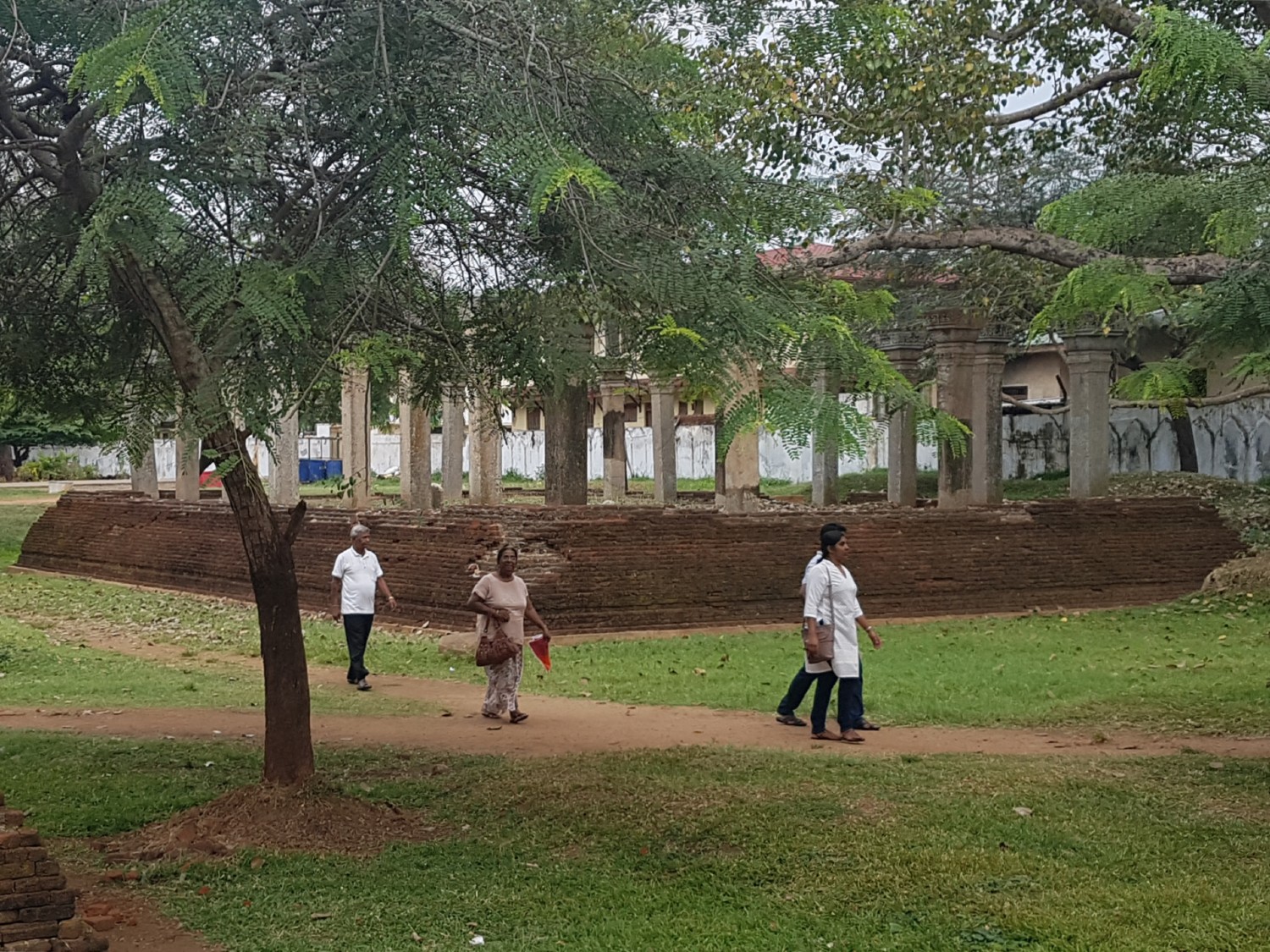
Myura Prewena,
Anuradhapura Historical Park

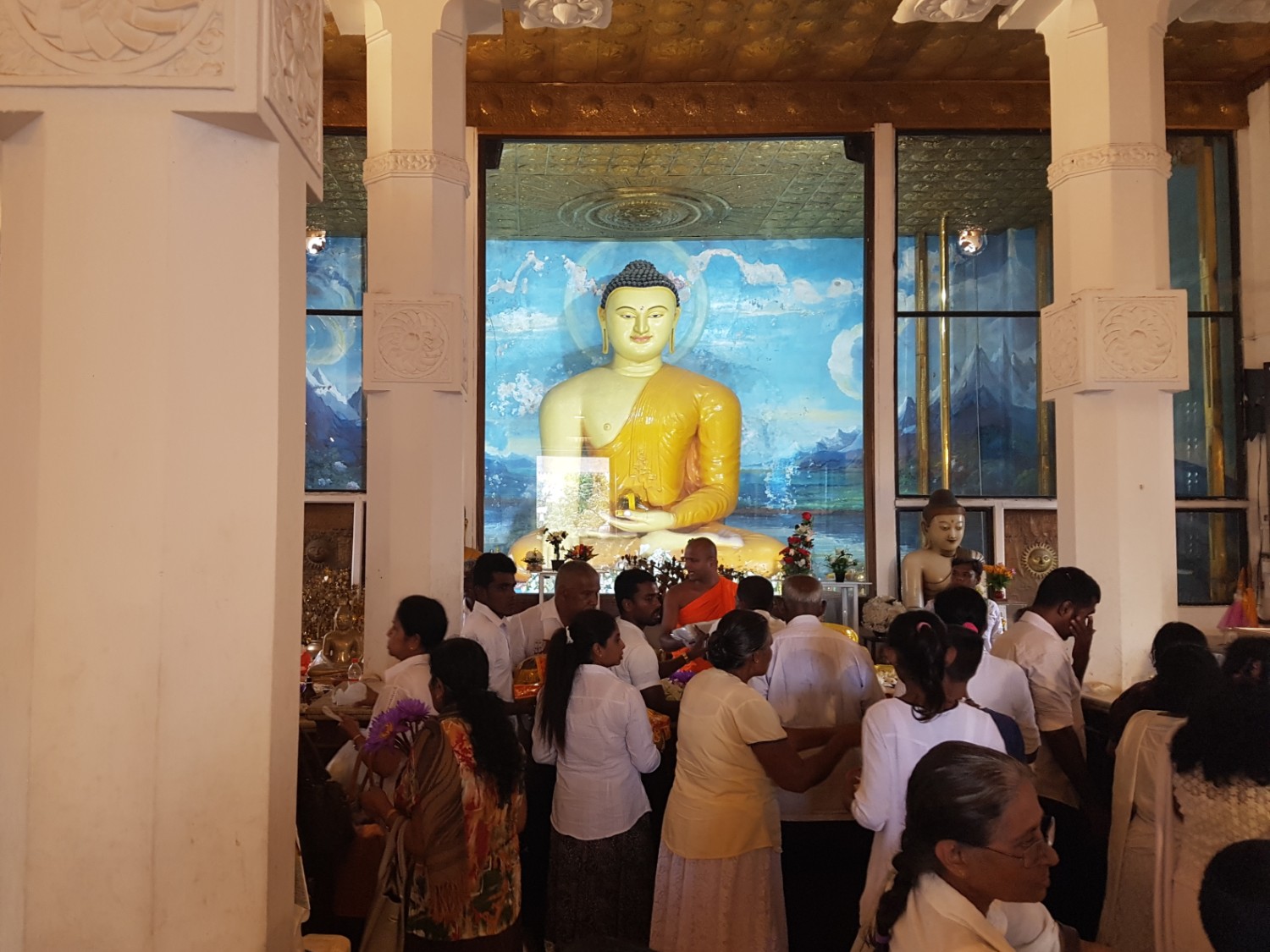
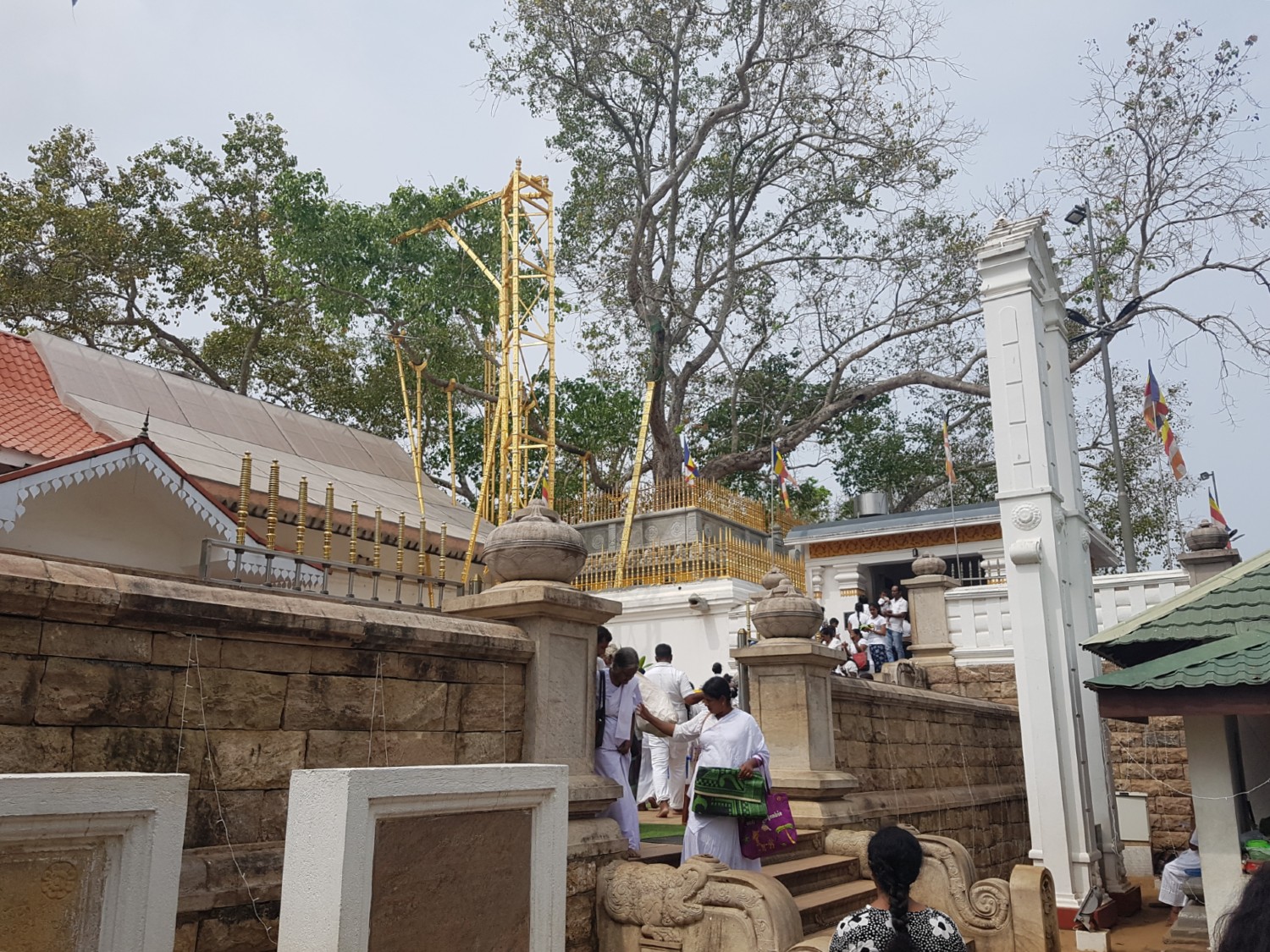
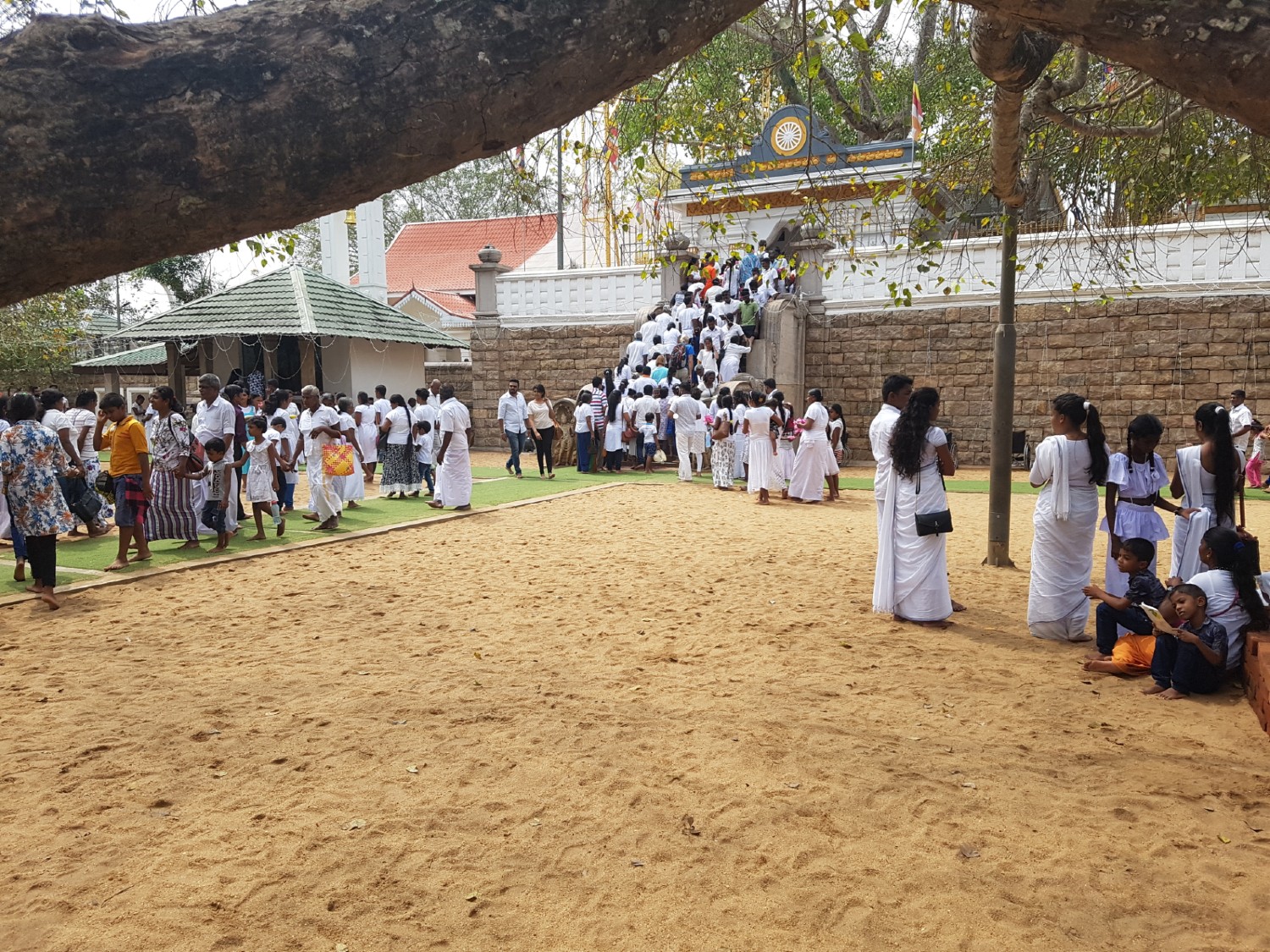
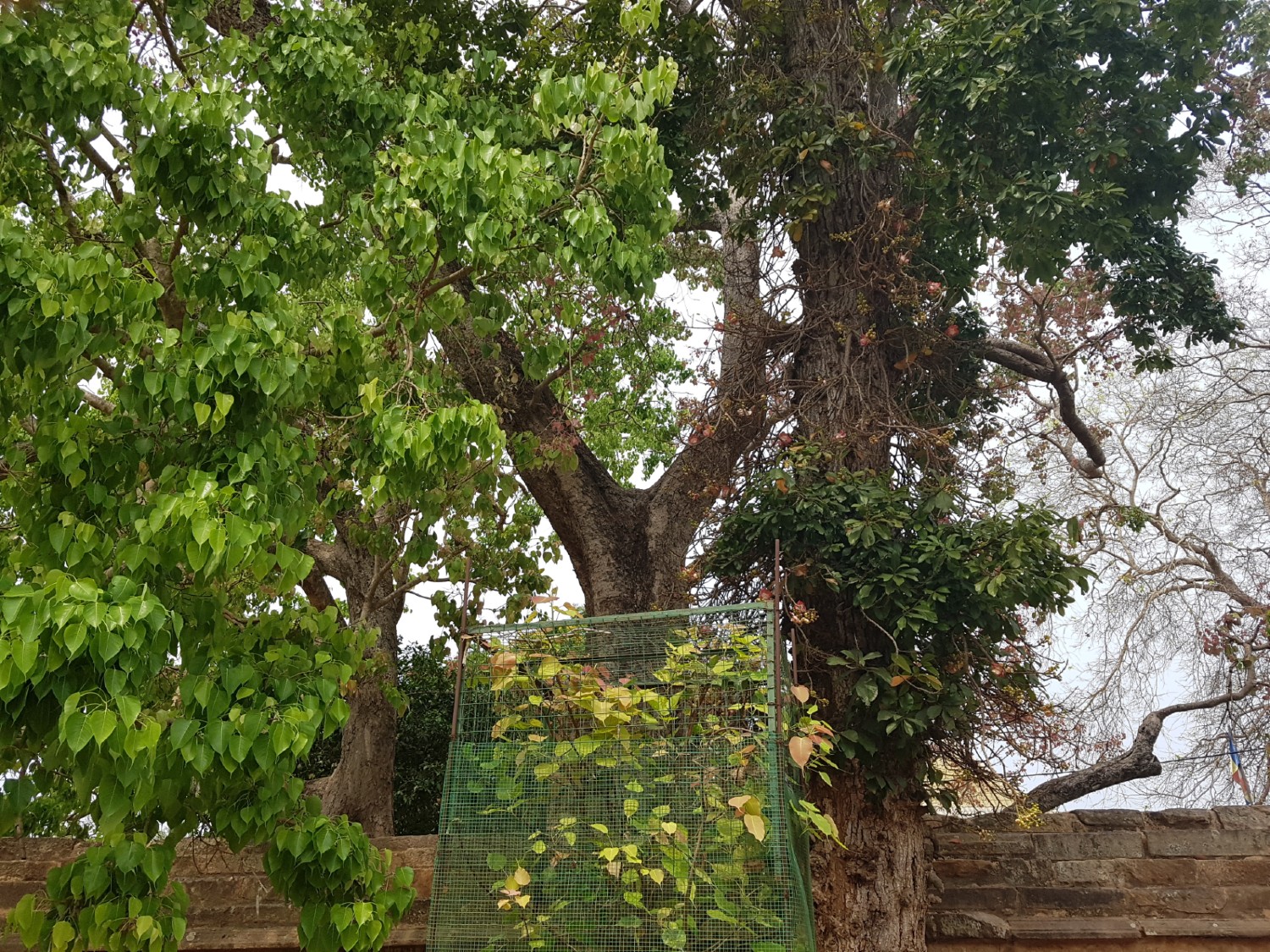
Maha Bodi Tree,
Anuradhapura Historical Park

Dakkhina Tupa, Anuradhapura Historical Park
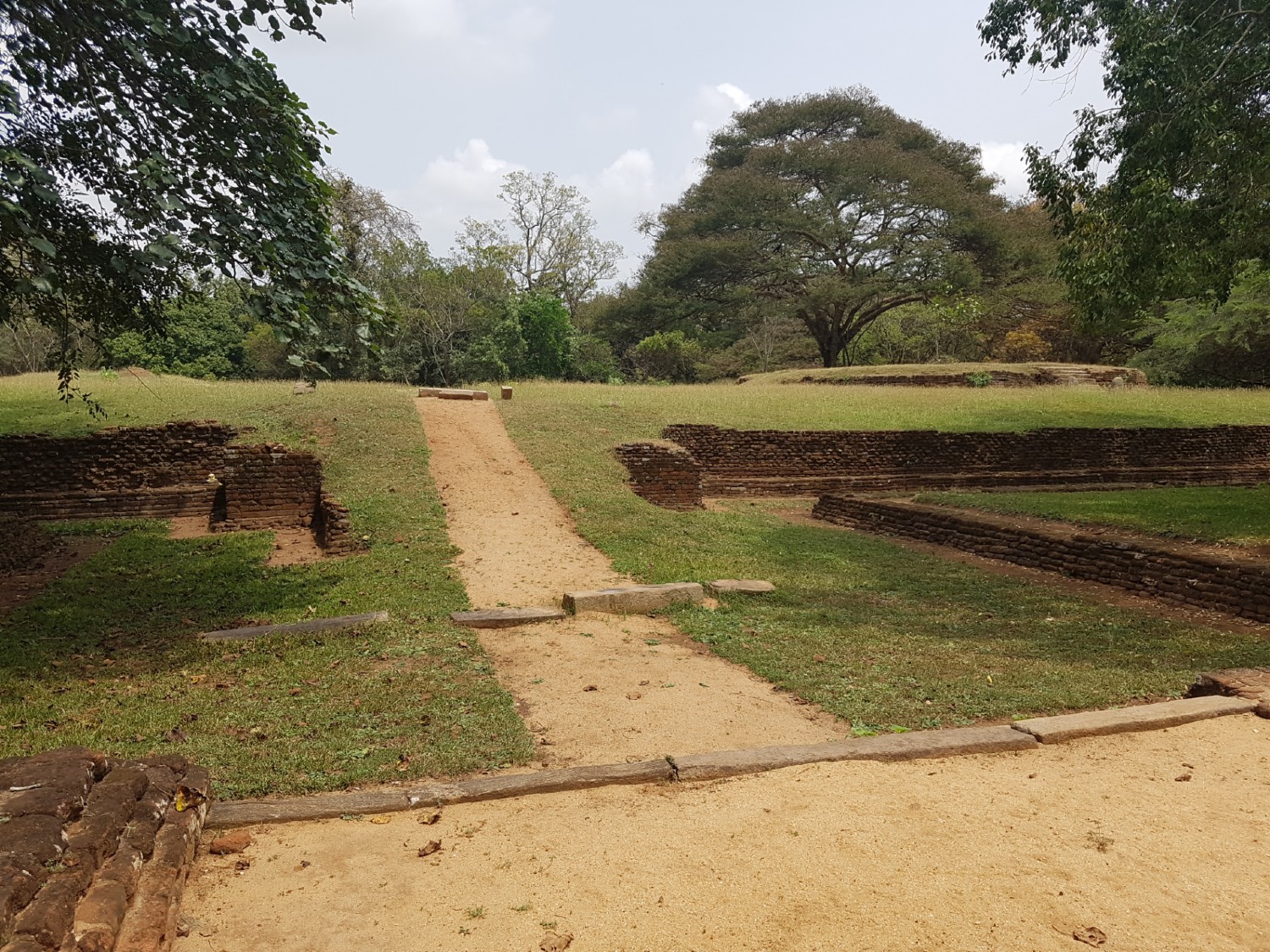
Pracina Tissa Pabbata Vihara,
Anuradhapura Historical Park
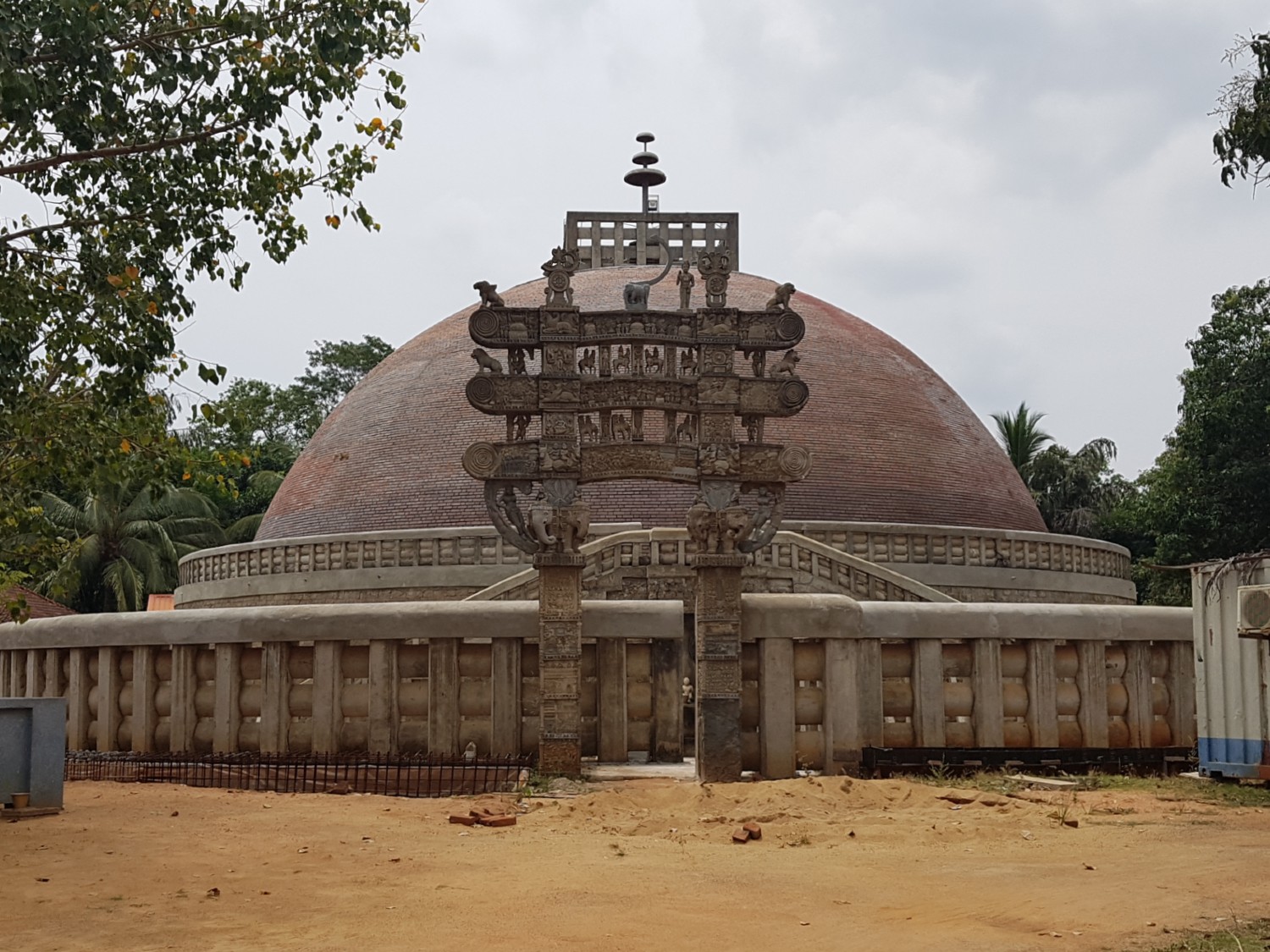
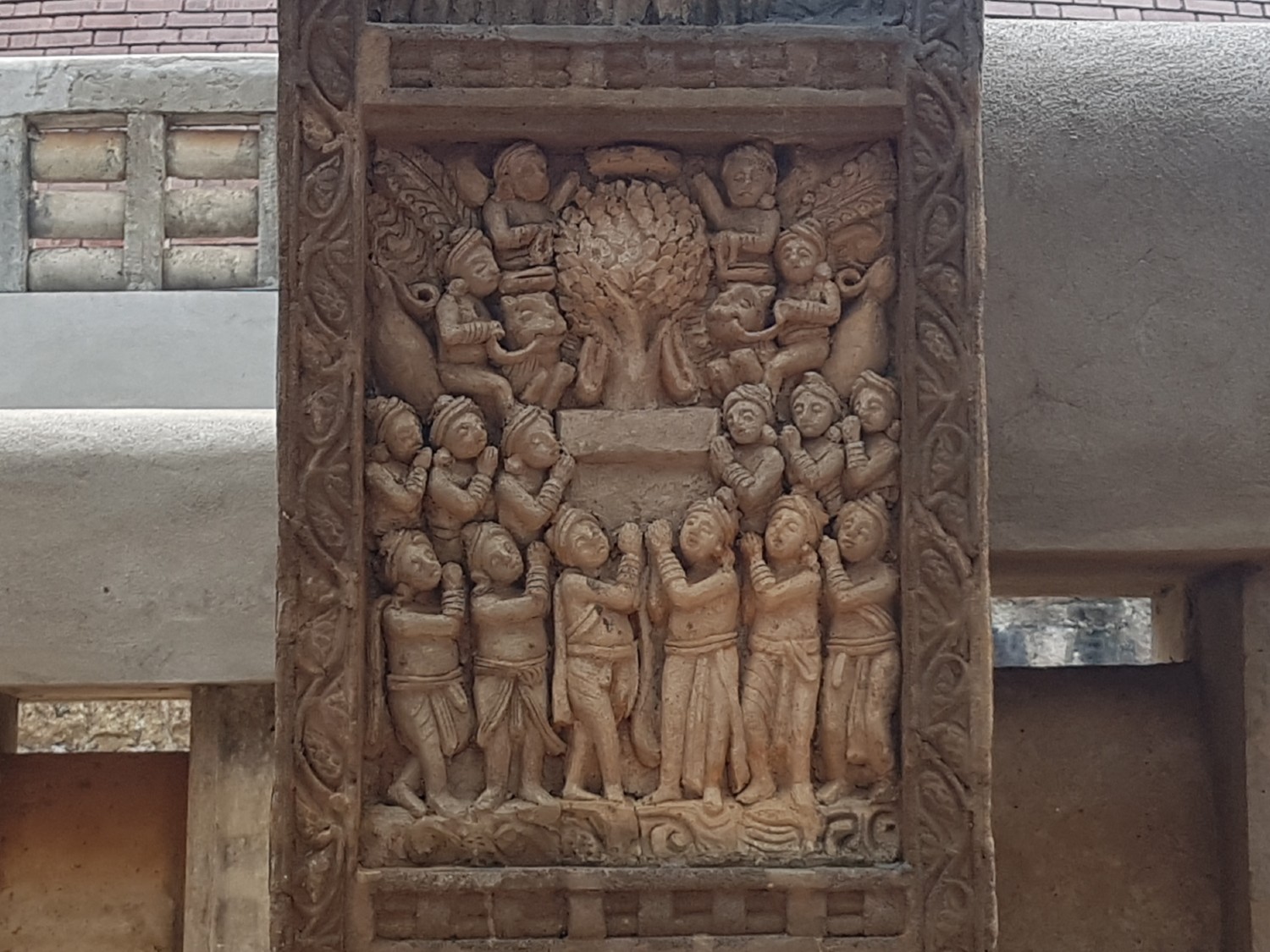
Anubudu Mihindu Maha Seya near Mihintale, Anuradhapura
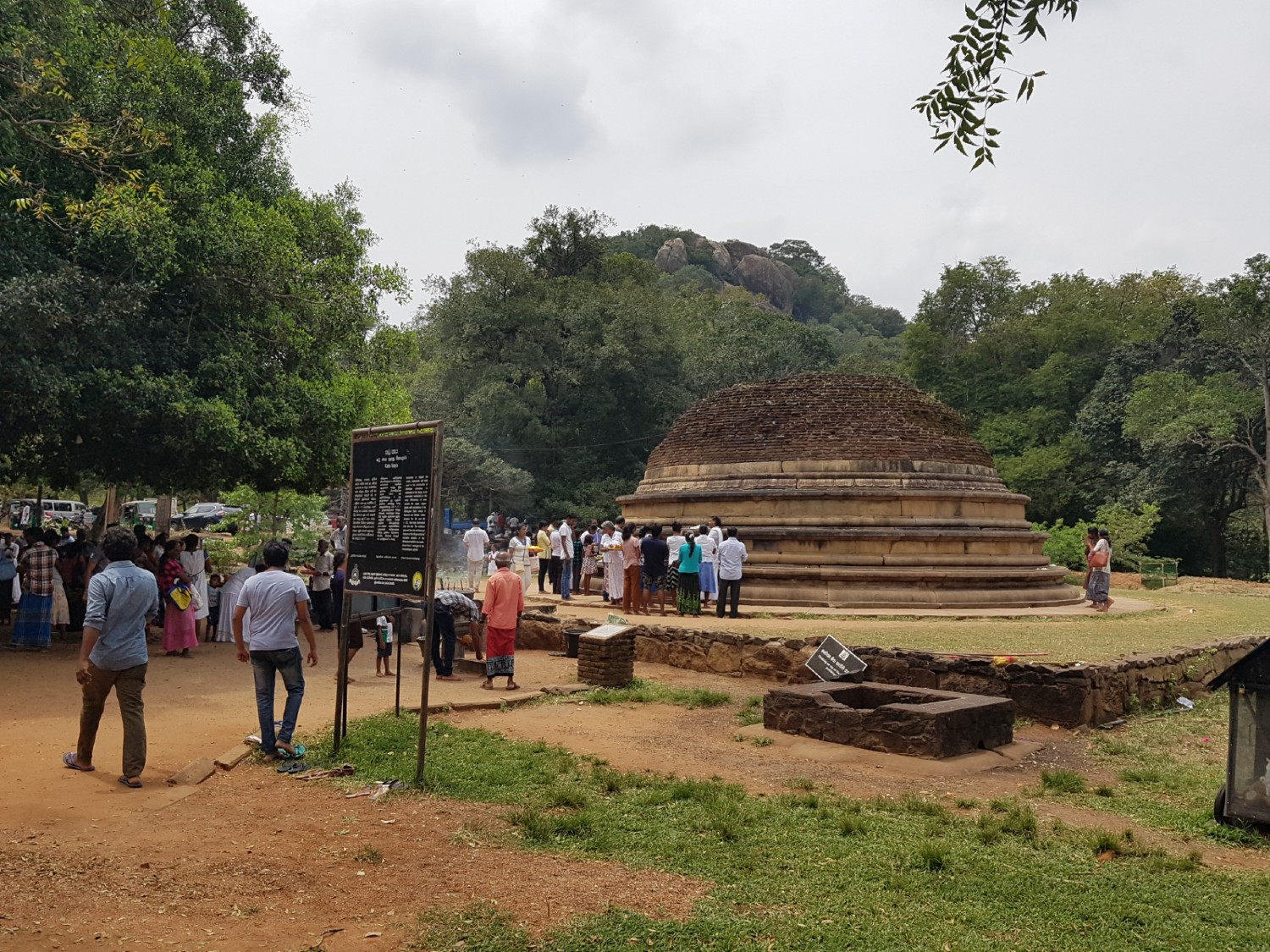
Katu Seya near Mihintale, Anuradhapura
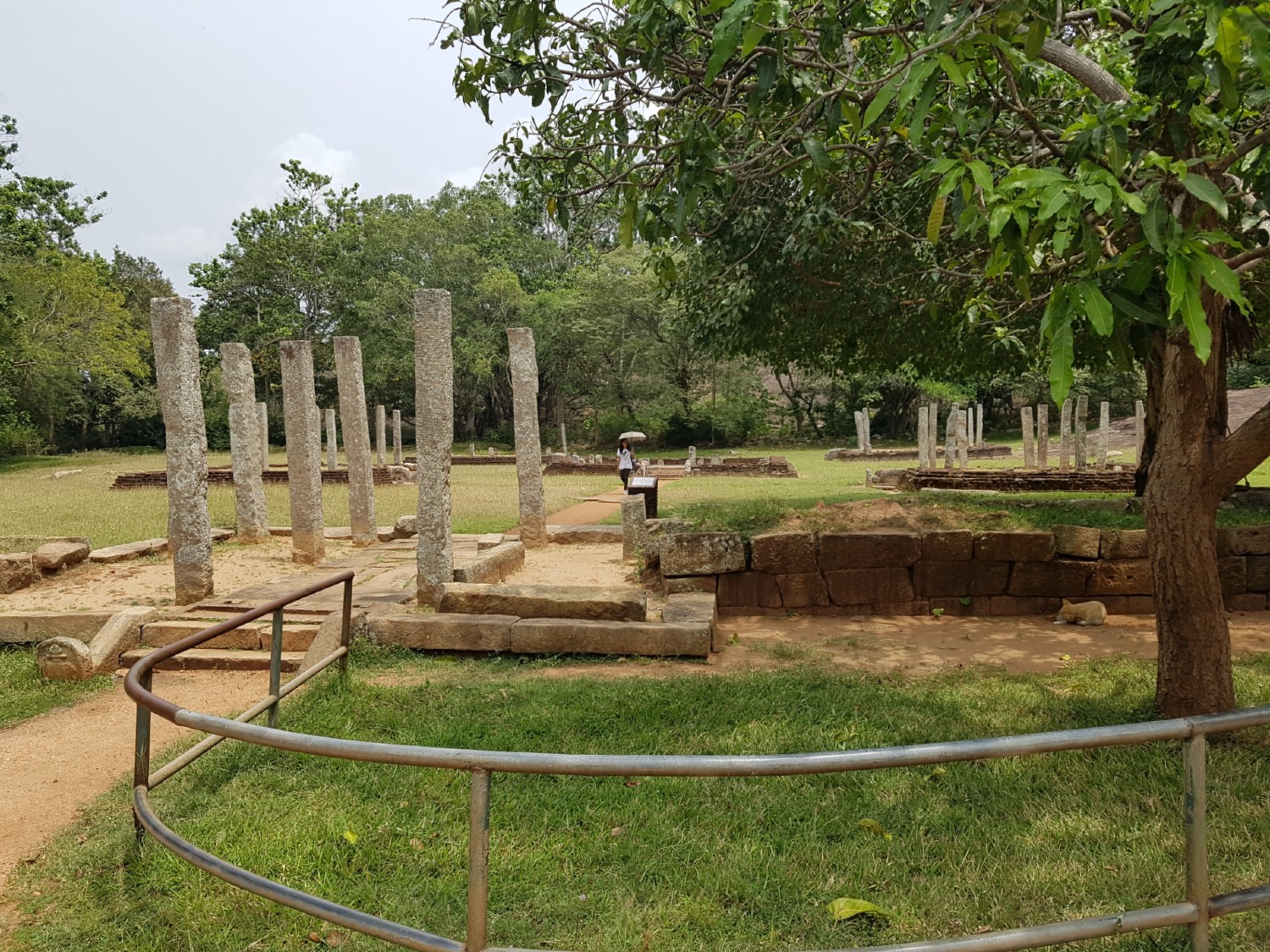
Monastic Building at the Foot of the Mountain, Mihintale, Anuradhapura
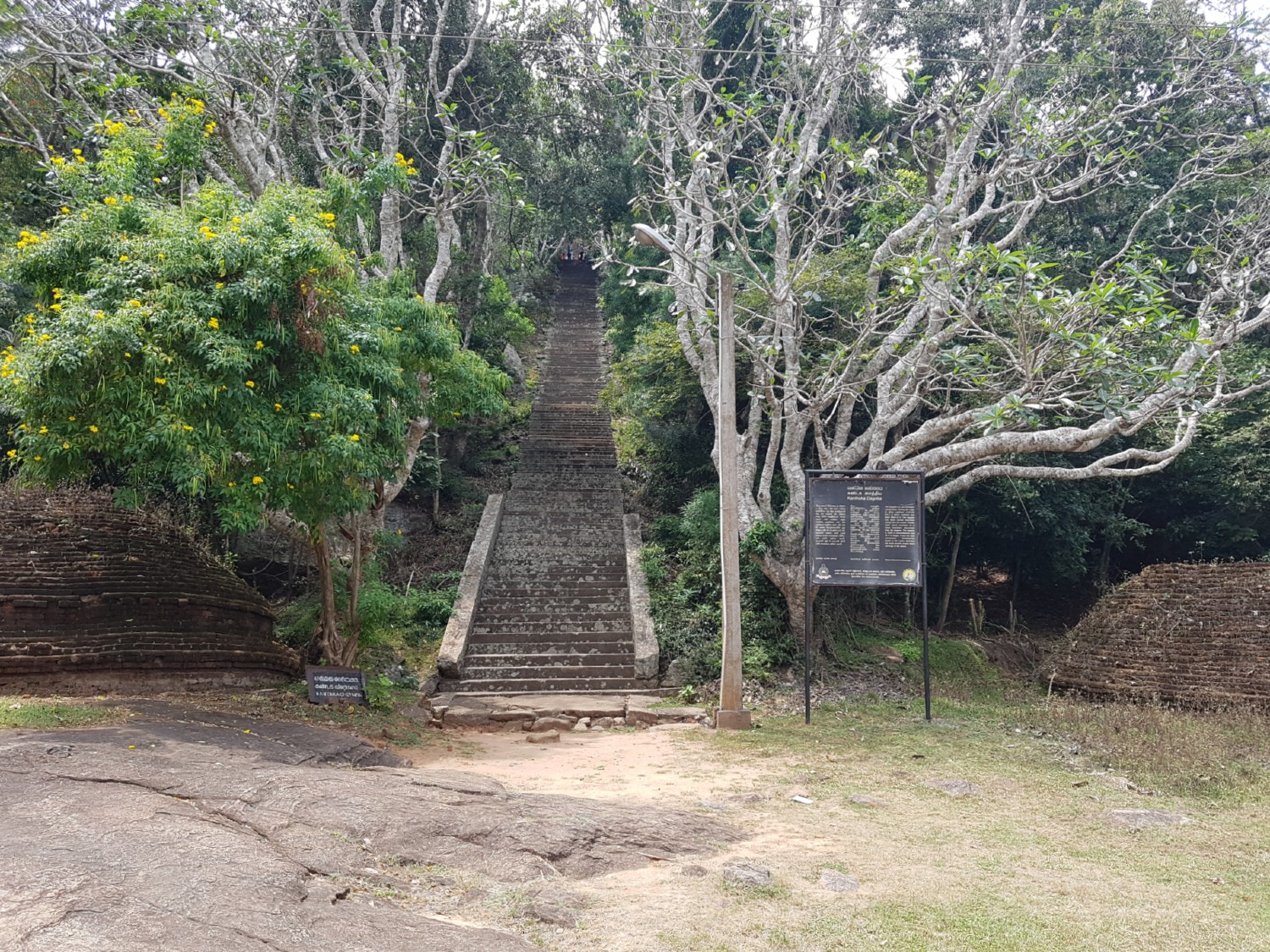
Kanthaka Dagoba, Mihintale, Anuradhapura
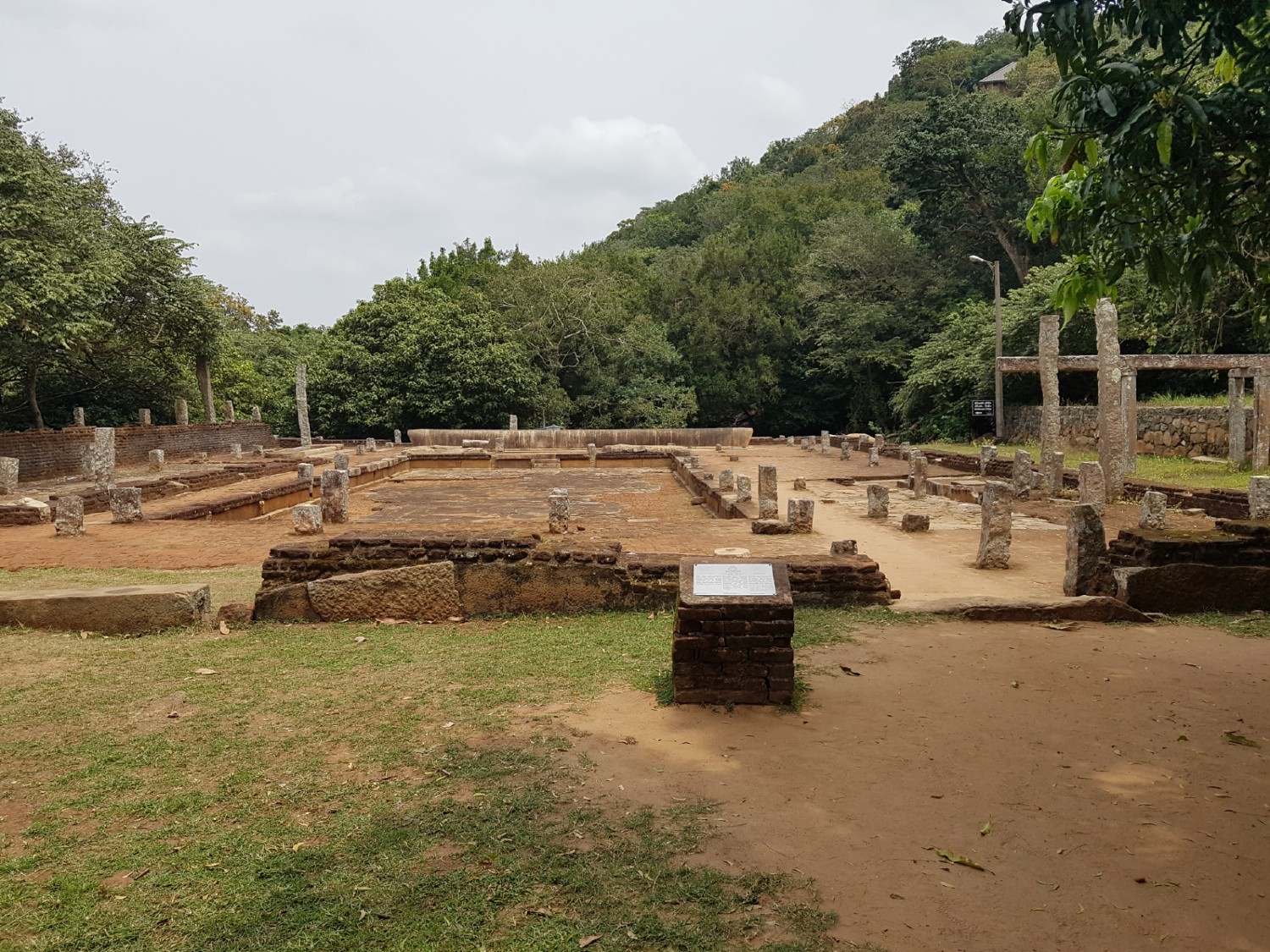
The Alms Hall, Mihintale, Anuradhapura

Maha Stupa, Mihintale, Anuradhapura
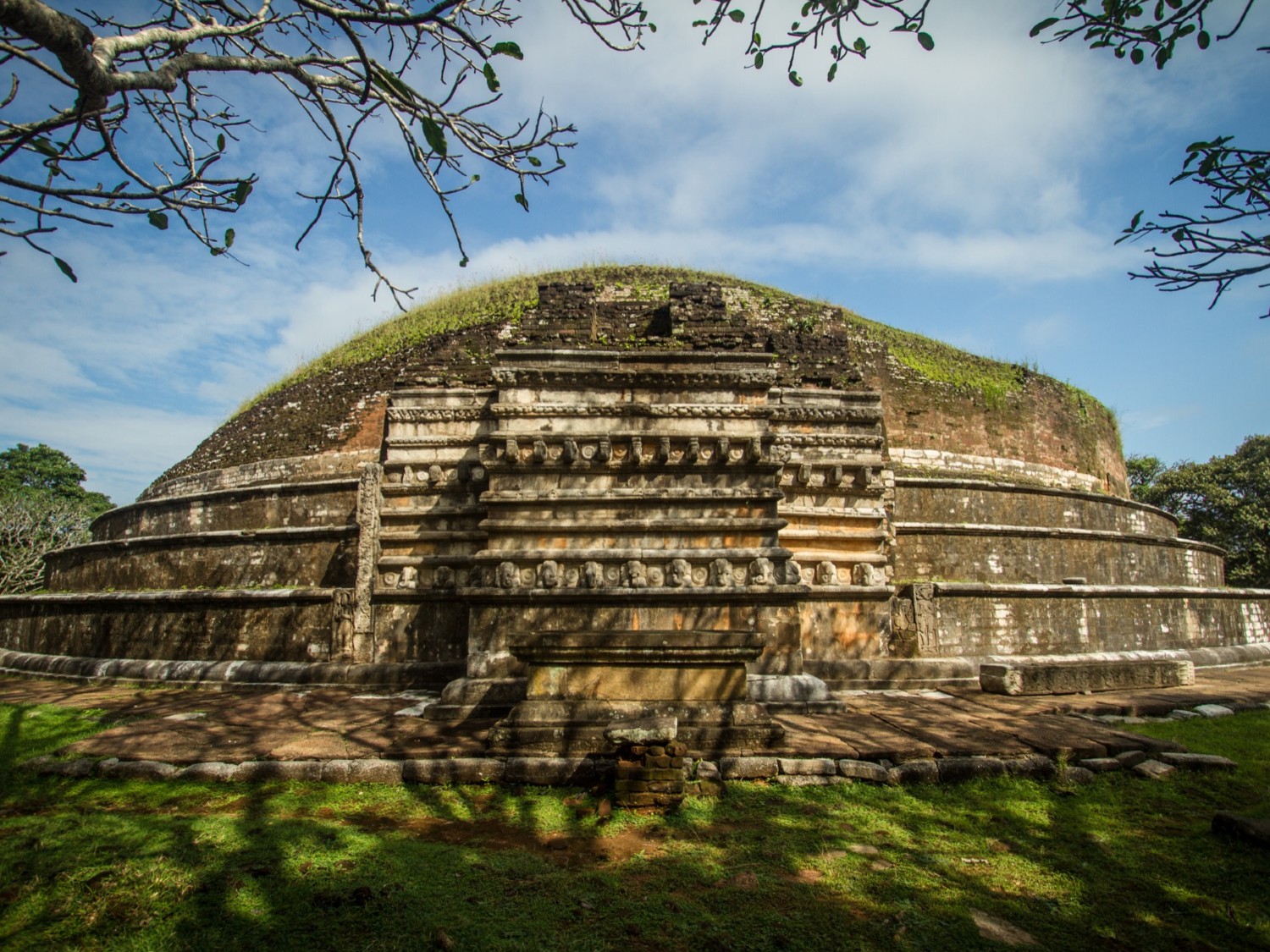
Kantaka Chetiya (Stupa), Mihintale, Anuradhapura
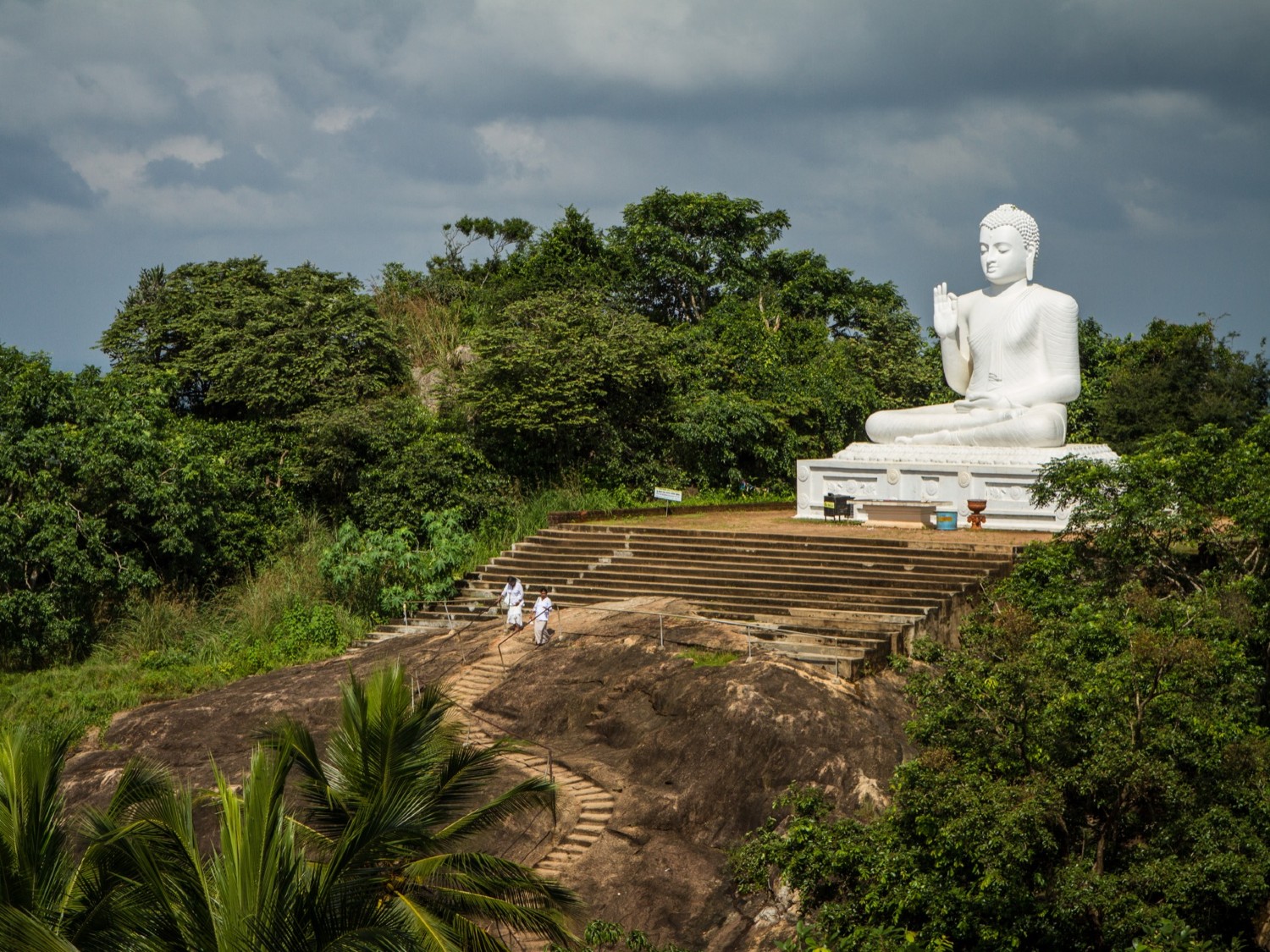
Mihintale Buddha Statue, Mihintale, Anuradhapura
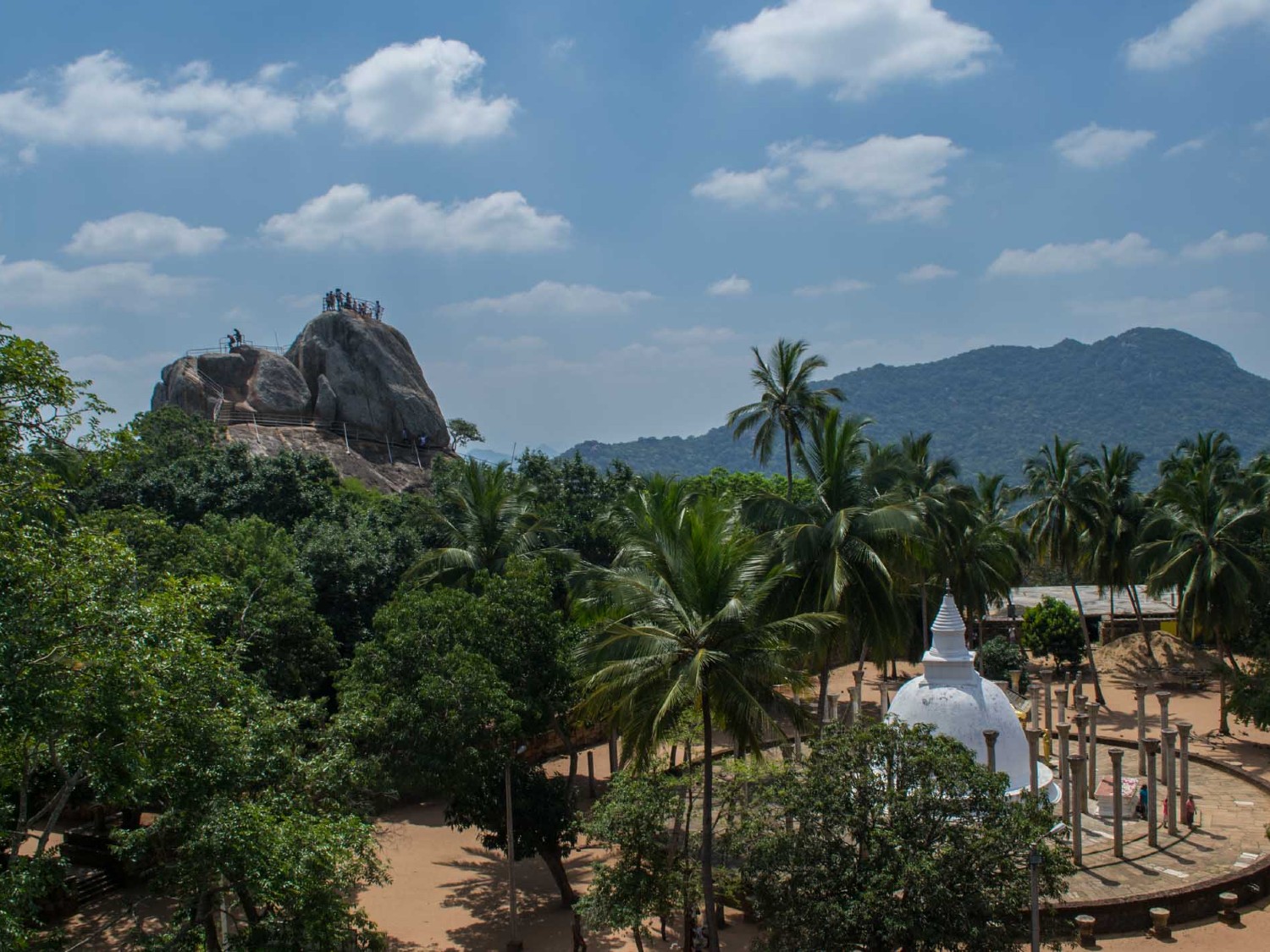
Mihinthalaya Rajamaha Viharaya, Mihintale, Anuradhapura
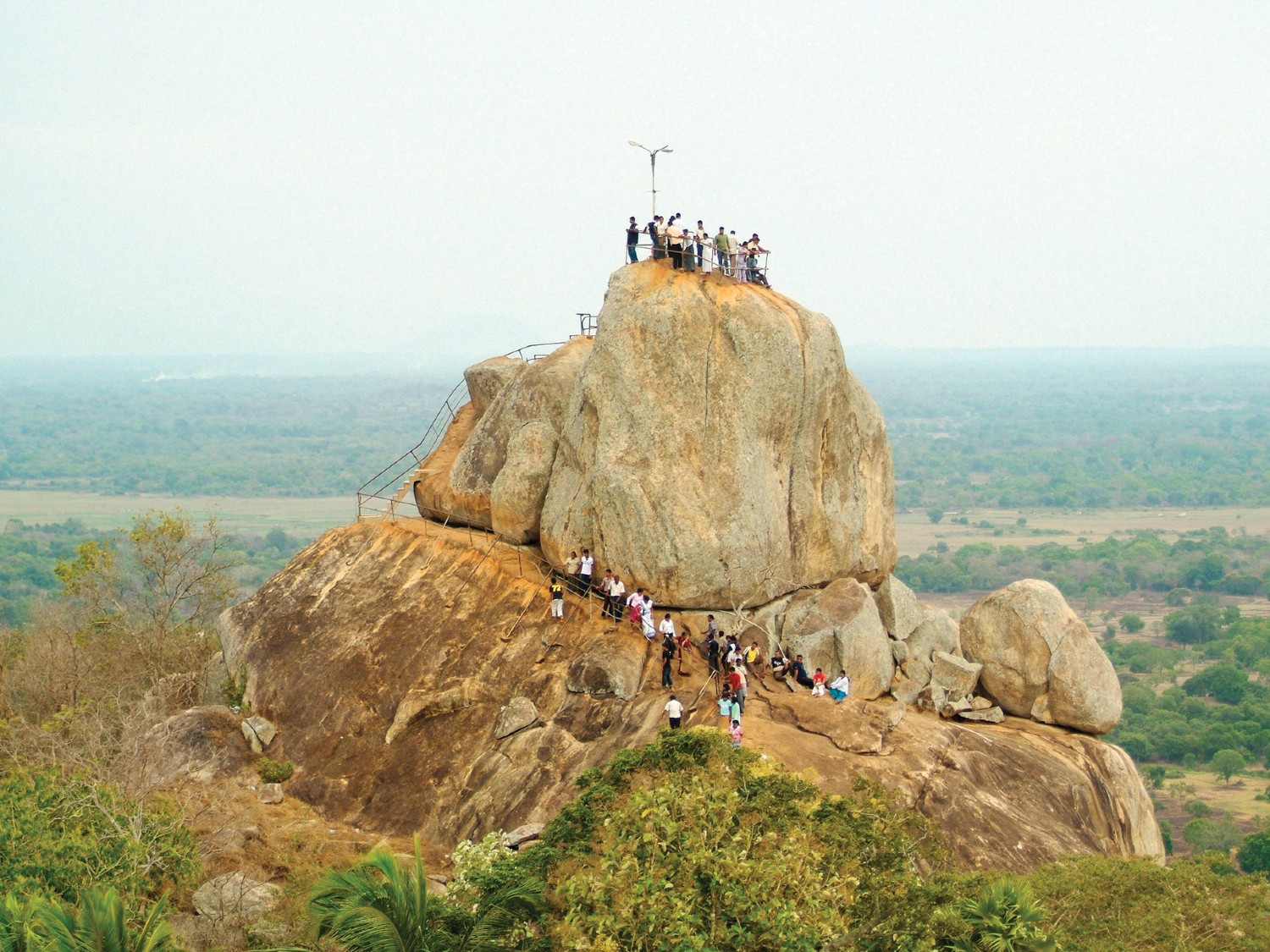
Aradhana Gala, Mihintale, Anuradhapura
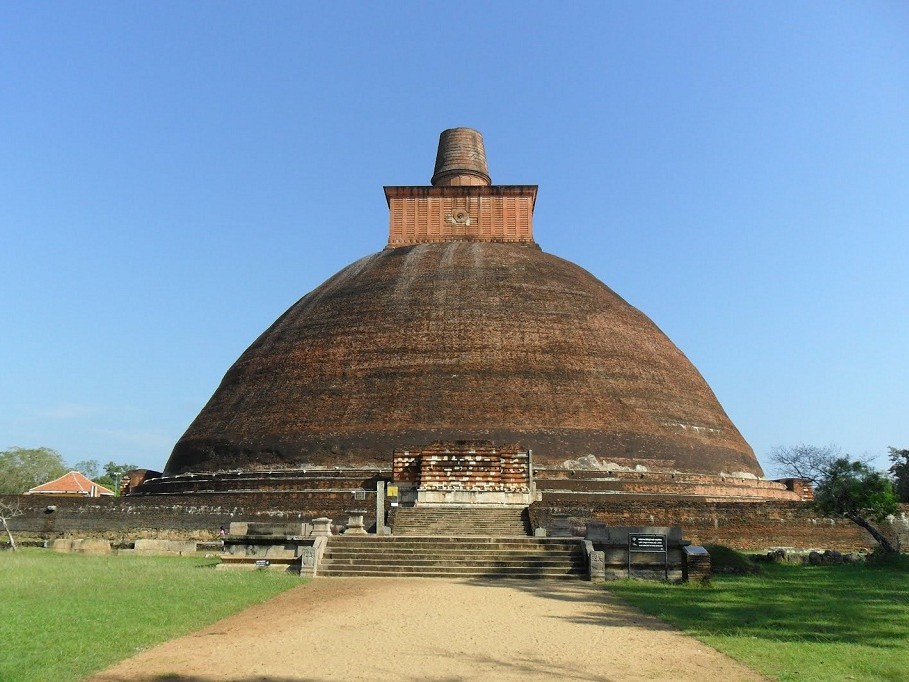
Jetavanarama, Anuradhapura Historical Park
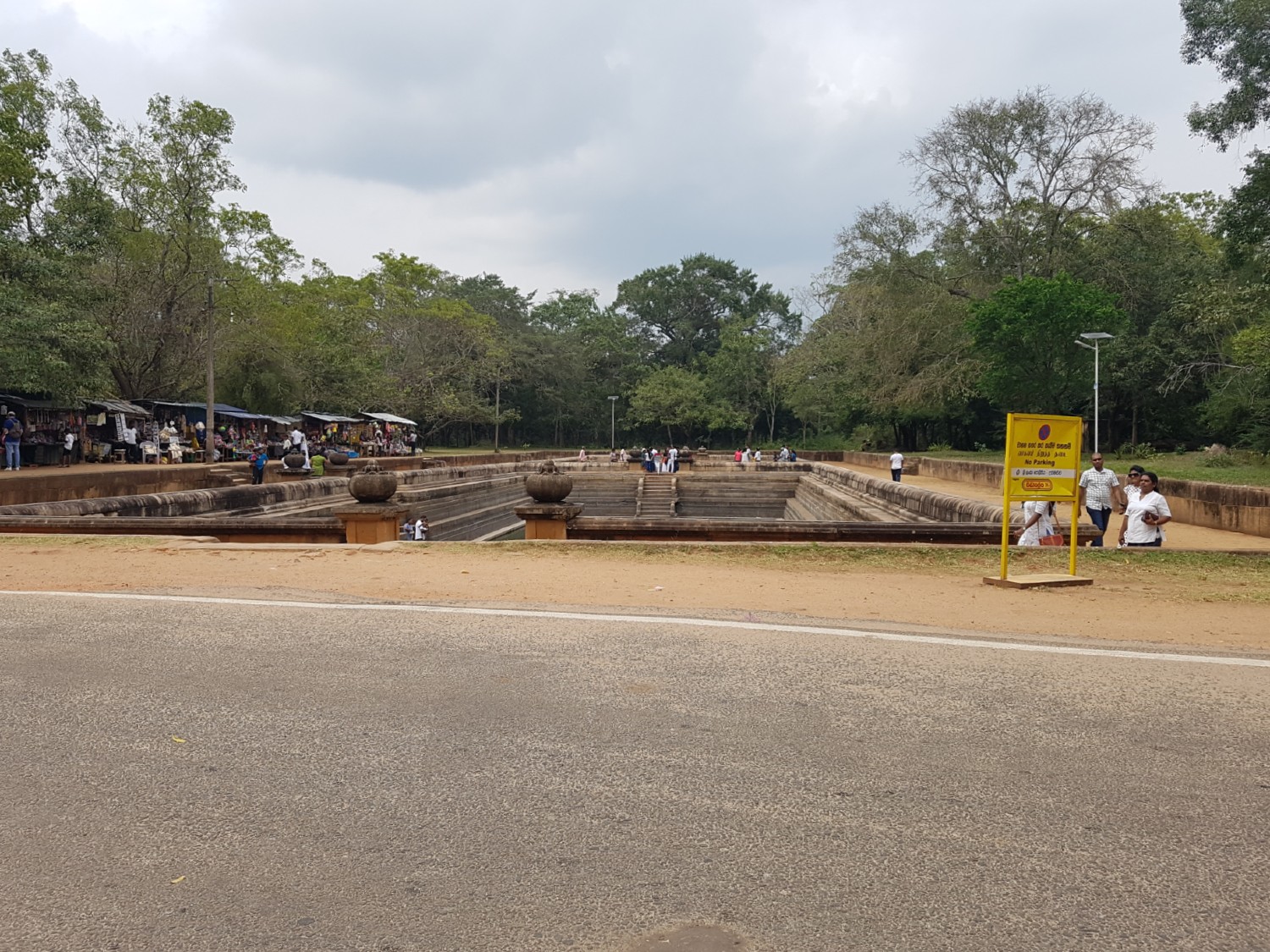
Twin Ponds, Anuradhapura Historical Park
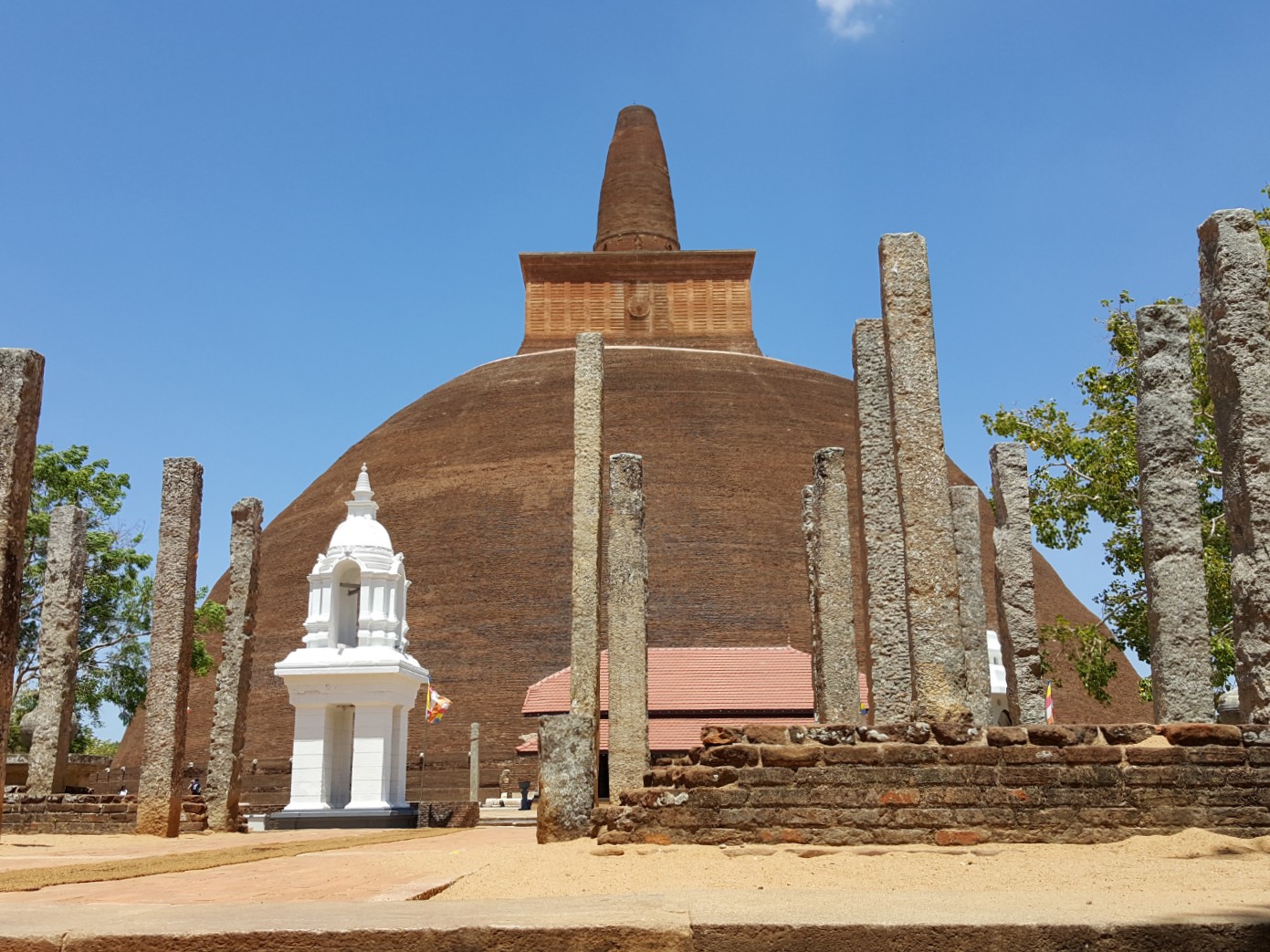
Abhayagiri Dagaba,
Anuradhapura Historical Park
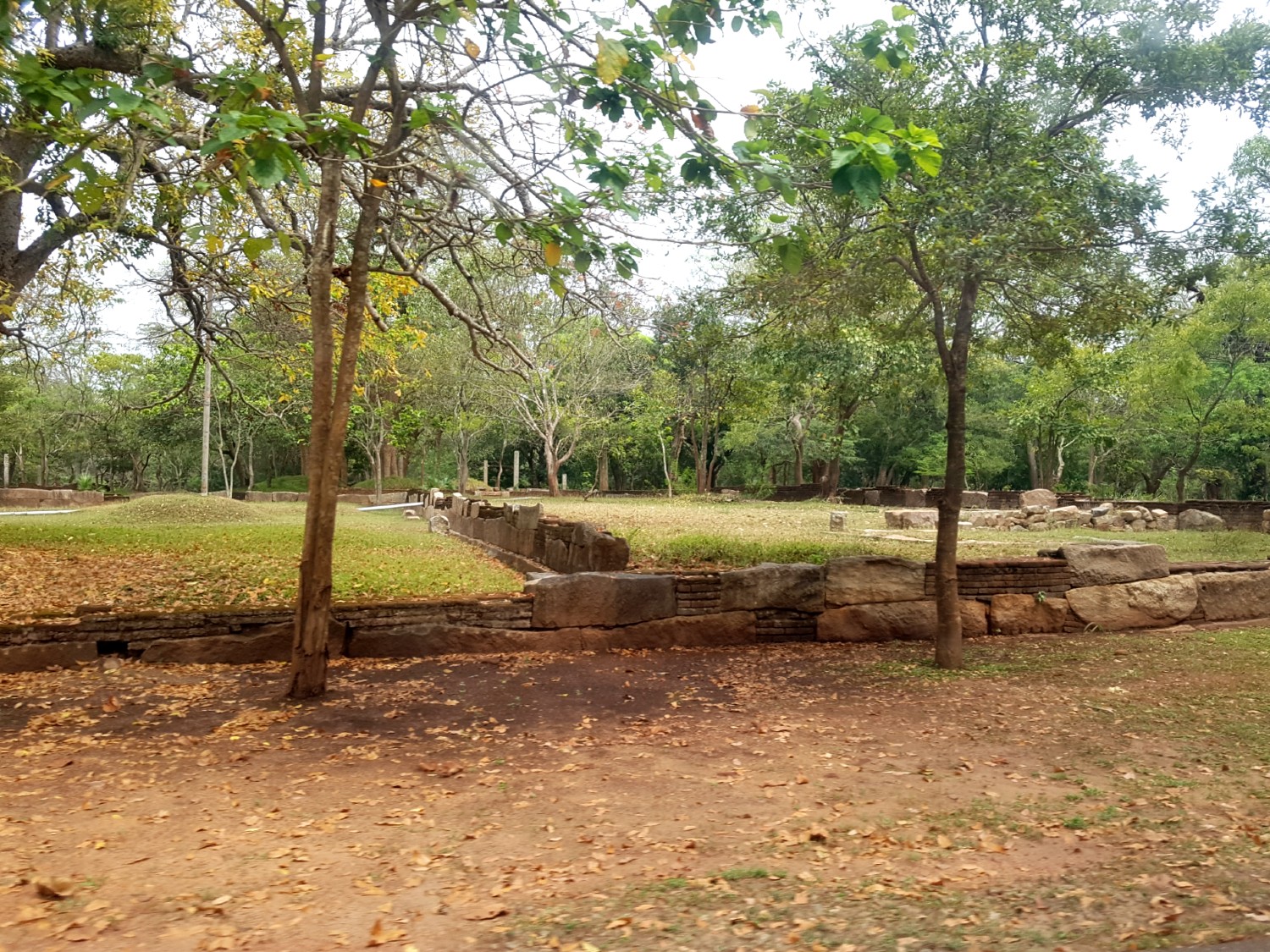
Unidentified Ruin (one of many), Anuradhapura Historical Park
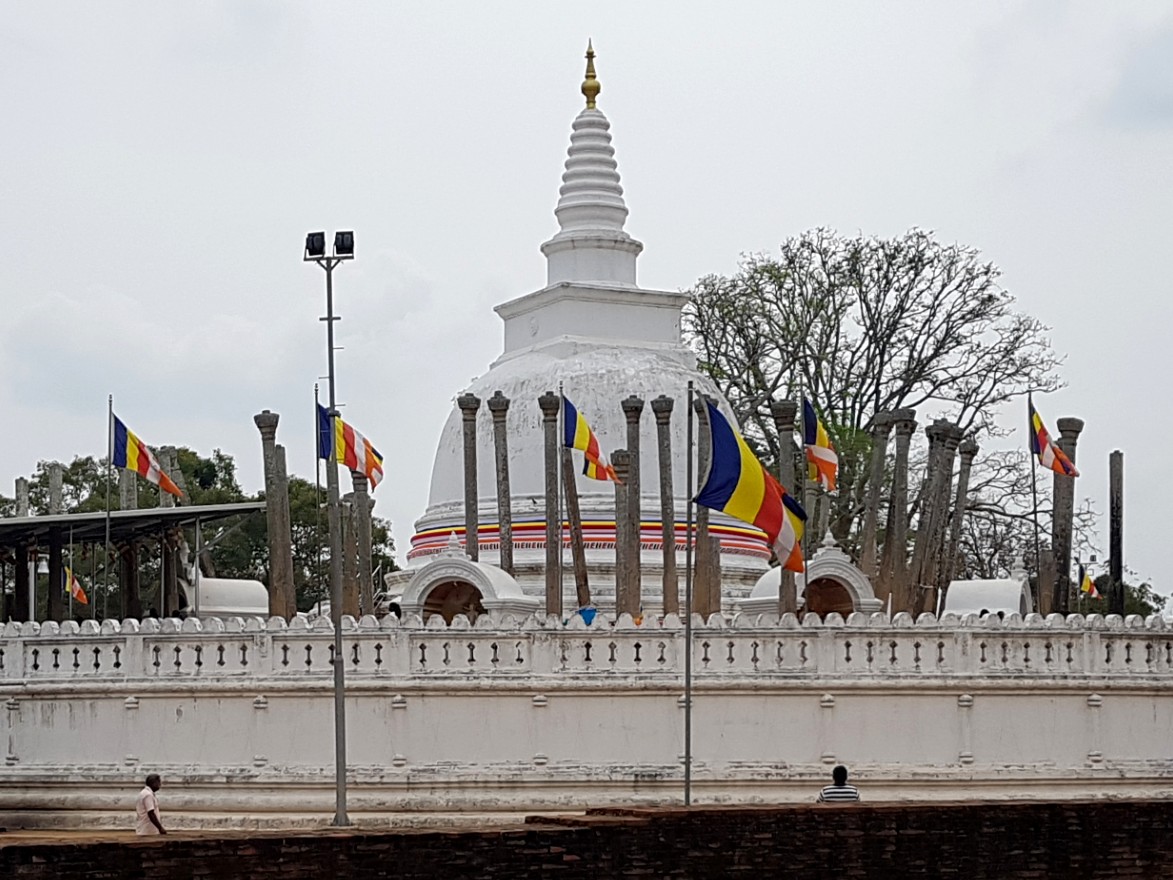
Thuparamaya, Anuradhapura Historical Park